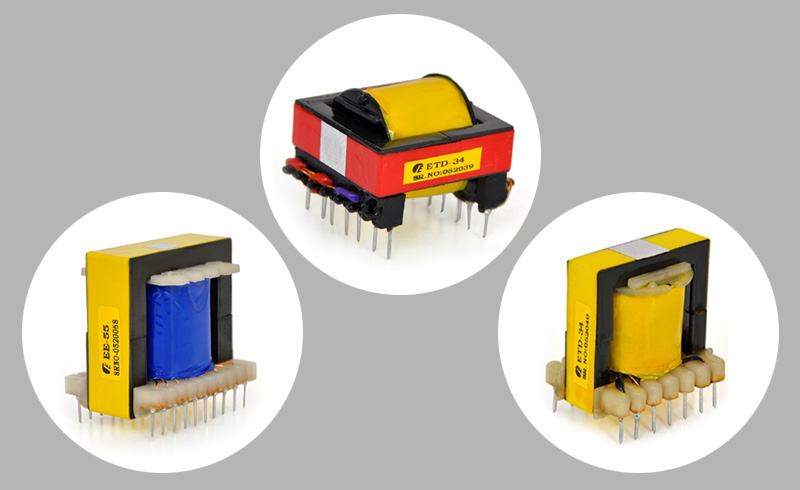No Product Added

By : Shah Electronics

Flyback transformers are a type of transformer used in switched-mode power supply (SMPS) circuits. They are used to convert AC input voltage to DC output voltage, and they can also provide isolation between the input and output circuits. Flyback transformers are a popular choice for SMPS applications because they are relatively simple to design and manufacture, and they can be efficient over a wide range of input voltages.
A power supply circuit is a device that converts one form of electrical energy to another. Power supply circuits are used in a wide variety of electronic devices, including computers, televisions, and cell phones.
Power supply circuits can be divided into two main types: linear power supplies and switching power supplies. Linear power supplies use a transformer to step down the AC voltage from the wall outlet, and then a rectifier to convert the AC voltage to DC voltage. Switching power supplies use a transformer to step down the AC voltage from the wall outlet, and then a switching regulator to convert the AC voltage to DC voltage.
Switching power supplies are more efficient than linear power supplies, and they are also smaller and lighter. This is why switching power supplies are more commonly used in electronic devices today. In the case of a flyback transformer, the input energy is AC voltage, and the output energy is DC voltage.
Flyback transformers serve as a specific type of transformer commonly found in power supply switching circuits. Their primary purpose is to step down the alternating current voltage from the wall outlet while establishing isolation between input and output circuits. Additionally, flyback transformers can generate the high voltages required for certain electrical equipment. These transformers are highly versatile and efficient, making them a popular choice for a wide range of power supply circuits. Moreover, their simplicity in design and manufacturing contributes to their widespread use, allowing for the provision of various output voltages.
A flyback transformer's operation is based on the principle of electromagnetic induction. When an alternating current voltage is given to the transformer's primary winding, a magnetic field is created in the transformer core. This magnetic field creates a voltage in the transformer's secondary winding. The secondary winding's output voltage is DC voltage.
A high-voltage spike is produced by the flyback transformer's collapsing magnetic field. A diode and a capacitor are often used to dampen this surge. Even when the input voltage is withdrawn, the diode allows the current to continue in the secondary winding. The capacitor retains the energy from the collapsing magnetic field and delivers it to the load as a direct current voltage.
The following is a more detailed explanation of the working principle of a flyback transformer:
The input AC voltage is applied to the primary winding of the transformer.
The primary winding creates a magnetic field in the transformer core.
The magnetic field collapses when the input voltage is removed.
The collapsing magnetic field induces a voltage in the secondary winding of the transformer.
The peak voltage of the induced voltage is equal to the peak voltage of the input voltage.
The output voltage from the secondary winding is DC voltage.
The diode allows the current to flow in the secondary winding even after the input voltage is removed.
The capacitor stores the energy from the collapsing magnetic field.
The capacitor releases this energy to the load as a DC voltage.
The working principle of a flyback transformer is relatively simple, but it is very effective at converting AC voltage to DC voltage. Flyback transformers are used in a wide variety of SMPS applications because they are efficient, reliable, and relatively inexpensive.
Despite their versatility and efficiency, flyback transformers present certain challenges, such as the generation of high voltages and potential inefficiencies at low input voltages. However, these challenges can be overcome through various means:
High voltages: Flyback transformers have the capacity to produce high voltages, which, if not managed properly, can pose safety risks. One approach to address this challenge is the use of step-up transformers, which raise the input voltage to increase the transformer's efficiency and reduce the likelihood of safety hazards.
Low input voltage inefficiency: Flyback transformers may exhibit reduced effectiveness at low input voltages, leading to increased power usage. To mitigate this issue, designers can explore the implementation of soft-switching converters. These converters employ unique switching techniques that minimize the occurrence of high-voltage spikes, resulting in improved safety and efficiency.
Noise production: Flyback transformers have the potential to generate noise, which can be problematic in certain applications. To counteract this, filtering techniques can be employed to reduce the noise produced by the transformer, ensuring optimal performance in noise-sensitive scenarios.
Flyback transformers play a pivotal role in electronic engineering, offering a wide range of applications with their efficiency, reliability, and cost-effectiveness. Their extensive utilization spans industries involved in the production of consumer electronics, industrial machinery, and renewable energy sources. Due to their adaptability and ability to handle diverse power levels, flyback transformers have become indispensable in providing electricity for our modern society. When embarking on projects involving flyback transformers, seeking guidance from reputable manufacturers and suppliers, such as Shah Electronics, can be beneficial. With their expertise in electronic components, including conductors and transformers, Shah Electronics is dedicated to assisting you in selecting the ideal flyback transformer tailored to your specific requirements. Reach out to us now to explore the possibilities!
© 2025. Shah Electronics. All Rights Reserved. Terms of Use Privacy Policy Cookie Policy
Terms of Use
Privacy Policy
Cookie Policy
© 2025. Shah Electronics. All Rights Reserved.
Powered by WEBMANTRA